With demand for construction equipment running high amidst a busy few years of construction, the hunger for new machines was visible at the triennial CONEXPO-CON/AGG trade show, held March 14-18 in Las Vegas. But it wasn’t just about refreshing fleets. Equipment manufacturers had an array of machines running on alternative power sources such as lithium-ion batteries and hydrogen fuel cells. And advanced machine control systems—once seen as expensive add-ons—were increasingly presented as standard features. Even though these technologies and power systems can come with price premiums, there was clear interest from many of the 139,000 attendees at the show, planning ahead for tomorrow’s equipment fleet.
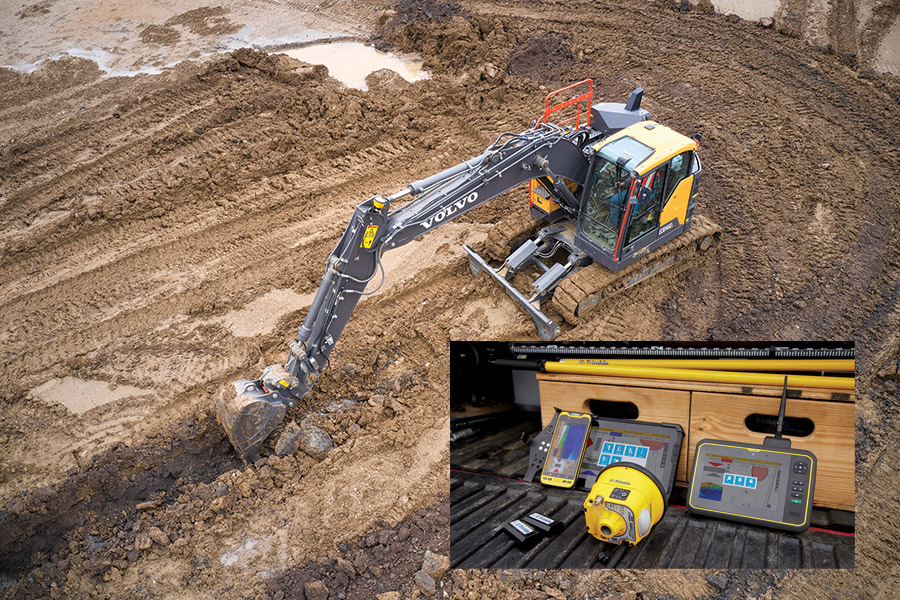
The CONEXPO show had everything from excavator machine controls and radar buckets to hydrogen power, robotic excavators and aggregate recycling systems.
Photo courtesy Trimble
Cleaner Power Gaining Ground
While battery-powered mini and compact equipment has entered retail and rental channels in recent years, major manufacturers are looking at other power options for larger-class machines. The promise of a possible rise in production of hydrogen fuel cells has some big players taking a serious look at the alternative fuel, with Hyundai Construction Equipment showing off a 2-ton, hydrogen-powered wheeled excavator, the HW155H, designed for use in both indoor and outdoor settings. The company’s recent investments in battery and hydrogen technology are part of a “new brand identity,” according to company CEO Choi Cheol-Gon, who spoke to assembled members of the press.
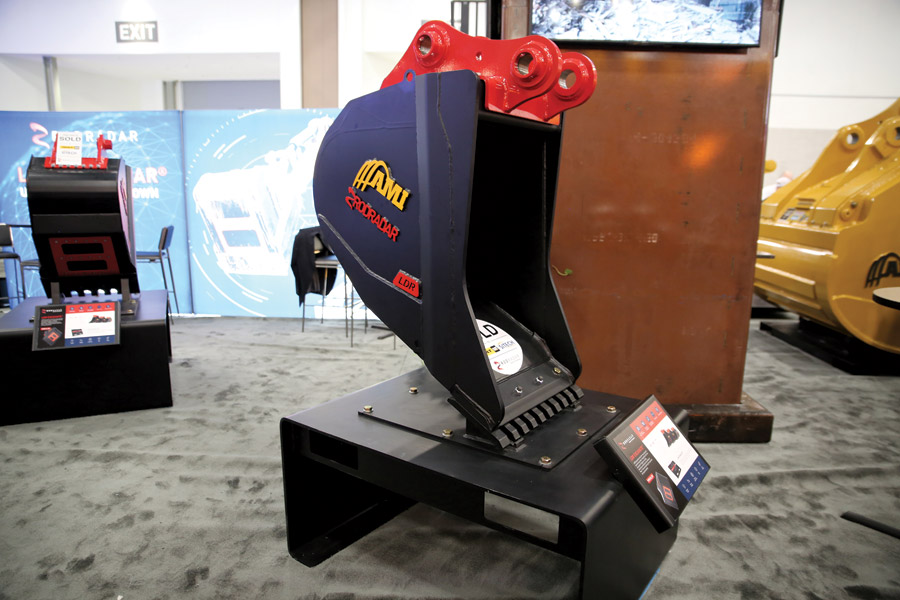
Radar bucket.
Photos by Jeff Rubenstone / ENR
Komatsu rolled out the PC210LCE, a 20-ton, battery-powered electric excavator that was first shown in October at the Bauma equipment show in Munich, Germany. The PC210LCE uses lithium-ion battery technology from Proterra and has 451 kWh of battery capacity, designed for up to eight hours of run time. The company first announced its collaboration with Proterra back in 2021 [ENR 2/15-2/22/21, p.42]. Komatsu also unveiled a Proterra portable charging station for customers on remote worksites. “We are aligned around creating value via manufacturing and technology innovation for sustainability,” says Rod Schrader, CEO of Komatsu America Corp. He says that Komatsu is committed to hybrid and fully electric products, hydrogen and synthetic fuels, and reducing fuel usage to achieve its goal of carbon neutrality by 2050.
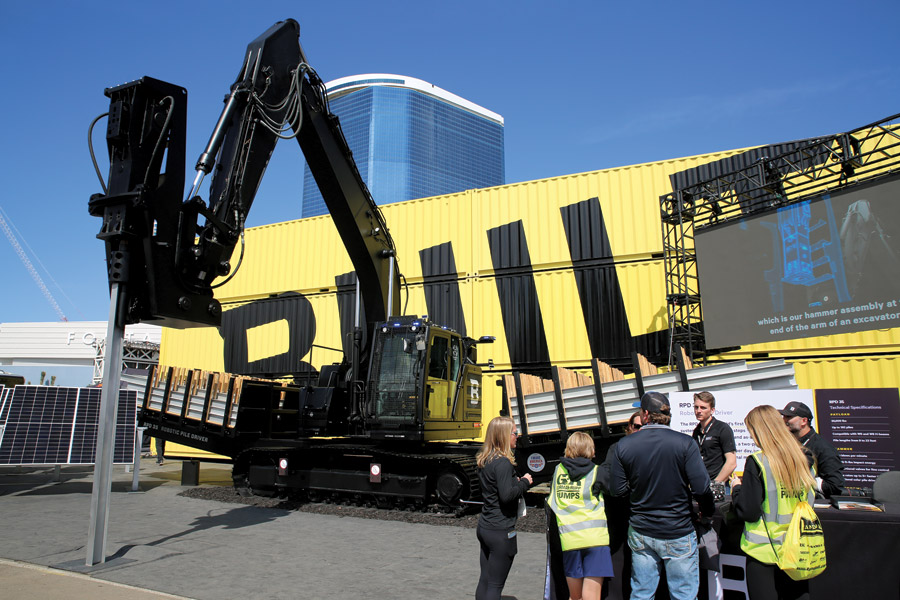
Robotic excavators.
Photos by Jeff Rubenstone / ENR
High Tech Goes Standard
Volvo Construction Equipment showed off a pre-production model of its EC500 excavator at the show. The excavator will be produced at Volvo’s facilities in South Korea and will be available through North American dealers by the end of the year. It has improvements in its cab design and operator interfaces, including a high-definition co-pilot screen and Volvo Active Control, an automated grading system and part of the Dig Assist suite of tools available for the first time on a 50-ton crawler excavator.
“You can now take—using active control—the experienced operator and have him or her dig something like a culvert for a subdivision,” said Stephen Roy, president of Volvo CE North America. “That information is saved and that same culvert can be dug in multiple locations, you can actually store that file and pass it along to another excavator.”
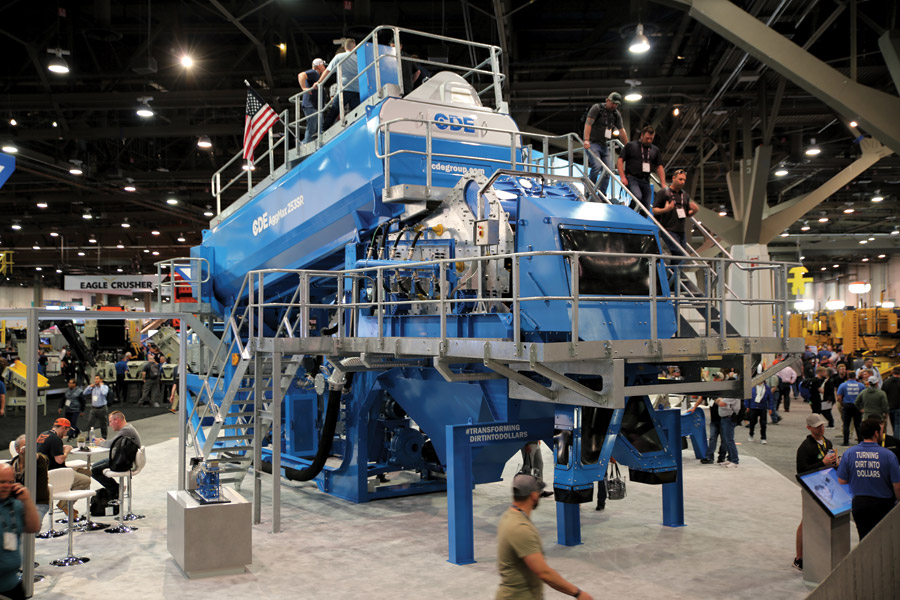
Aggregate recycling systems.
Photos by Jeff Rubenstone / ENR
Trimble drew in CONEXPO attendees with the Siteworks Machine Guidance Module, which extends the capabilities of Trimble Siteworks from surveying and layout to support on-machine excavator guidance and operator assistance. Unlike other excavator digging guidance systems, the module is manufacturer agnostic and can determine the width of the bucket and length of an excavator’s arm with two bolt-on attachments connected to a Trimble GPS. It can measure the size of buckets, distance to dig and other measurements that manufacturer guidance systems provide.
On the software side, Autodesk announced that it’s adding AutoSpecs, a submittal process that originated in Pype, into Autodesk Build. Since AutoSpecs became a part of Build on March 21, users can now track submittal statuses, create custom review processes, annotate and mark up submittals, and save closed submittals in Build. Brian Athey, director of construction innovation at Miron Construction in Chicago, says, “With AutoSpecs and Autodesk Build together in ACC, we increase our team’s efficiency with the submittal process and reduce the risk of missed submittals.”
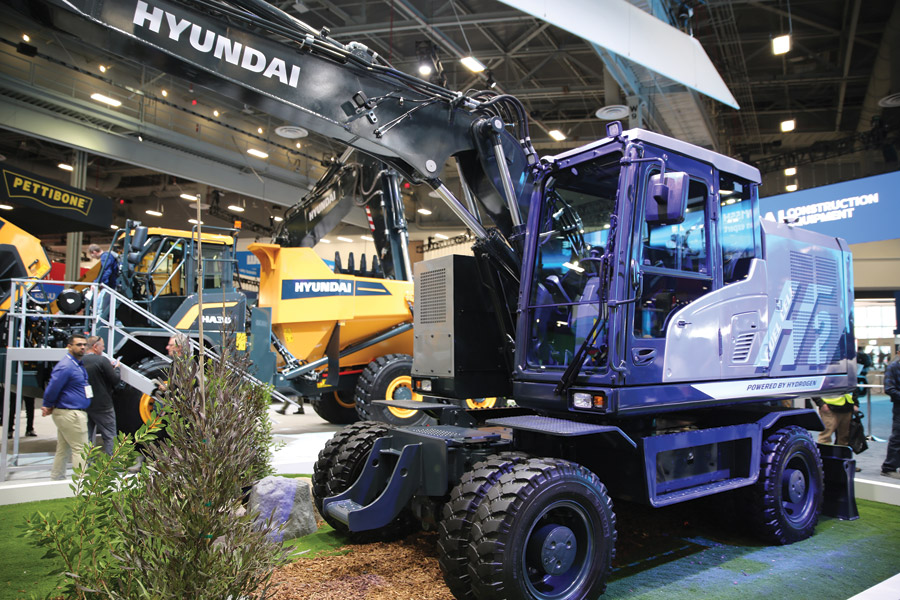
Hydrogen power.
Photos by Jeff Rubenstone / ENR
Even the humble excavator bucket itself is not safe from the benefits of new technology innovation. The Live Dig Radar excavator bucket from Rod Radar has an integrated ground-penetrating radar unit concealed in the bucket’s frame. This allows an excavator operator to scan the dirt for buried utilities by simply floating the back face of the bucket above the ground in front of the machine.
It’s not about getting a perfect underground image, but knowing if something is there at all, explains Yuval Barnea, vice president for sales and marketing at Rod Radar. “We have developed a unique ground-penetrating radar which instead of looking deep and paying for accuracy, we look for the next bite—we look shallow.” The GPR can see roughly 3 ft down, and will give the operator an alarm message if a possible buried utility is detected.
Autonomous equipment technologists Built Robotics were on-hand at the show as well, demonstrating their new custom-built excavator for fully autonomous installation of solar panel support piles. The modified excavator features an onboard carrier system for the steel piles, as well as a custom pile-driving attachment. Once the excavator is programmed with the locations of where the solar panels need to be, it heads off on its own and can spend a shift picking up and driving piles, with no in-cab operator needed.




_ENRready.jpg?height=200&t=1677786838&width=200)

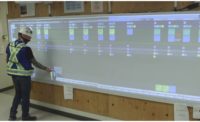
Post a comment to this article
Report Abusive Comment